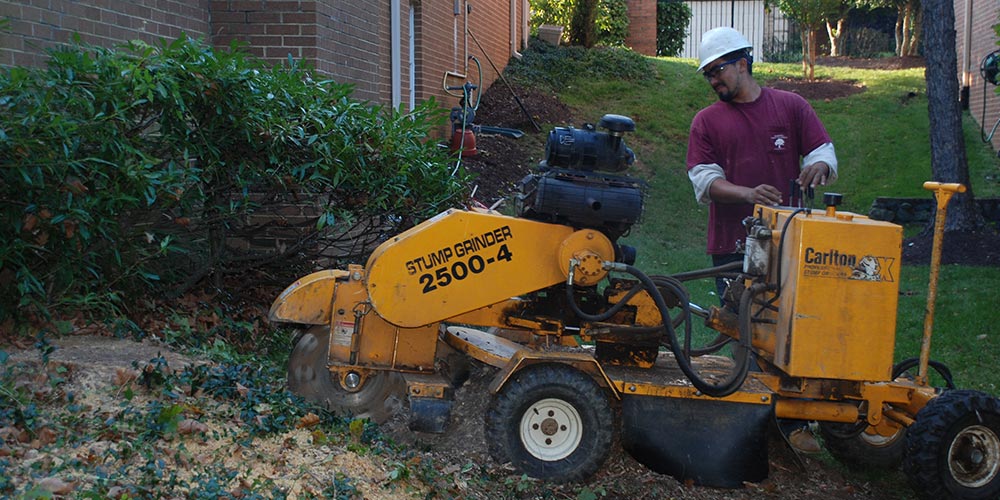
How to Prepare Your Trees for Winter
Many trees look their finest in the fall, with their leaf displaying a rainbow of blazing hues. But, in addition to admiring them, now is an excellent opportunity to perform a few maintenance duties.
The following fall tree care tips guarantee your trees are ready for the cooler months.
Mulch your trees
The first step in fall tree maintenance is to apply mulch. This helps keep soil moisture and insulate plant roots to avoid a stressful winter cycle of freezing and thawing.
You should remove any old mulch, fluff it up, and reapply it to the tree, adding more if it’s less than two inches deep.
Mulch should extend to the tree’s dripline (the extremities of the branches]. Keep the mulch three inches away from the trunk for the best outcome.
Fertilizing your trees in late summer or early fall will also give the trees the nutrients they require to stay robust throughout the winter. For the best outcome, tree removal services recommend you go for tree-specific feed or humic acid. Don’t buy any you come across in the stores.
Check the structure of the tree.
After the leaves have fallen from the branches, inspect the tree to see if it requires structural pruning.
It’s recommended that you wait until late winter because trees will wake up but won’t have started putting energy into the buds. If you can’t do the work yourself, make an appointment with a professional arborist.
Remove any dead or diseased branches if you notice them as soon as possible. This will lessen the risk of them toppling during a heavy storm or other bad weather.
Protect the trees from the cold weather.
Young trees, especially those with thin bark, such as maple trees, willows, or dogwoods, are vulnerable to sunscald or frost cracks emerging throughout winter.
You should wrap the trunks of these trees with burlap or commercial tree wraps to safeguard them. The best way is to assemble the wraps snugly but not too tightly.
This will protect your trees from hungry critters like rabbits or voles that may gnaw the bark throughout the winter. If you don’t need to protect your tree from sunscald or frost cracks, you can use plastic, mesh, or metal tree guards to keep pests out.
Inspect the trees
As you transition your yard from summer to fall, inspect your trees for illnesses or pest infestations.
Pests and diseases are usually not considered dangerous until they affect 20-30% of the foliage. The sooner you discover problems with your tree, the sooner you can work with your local arborist to repair those problems and prevent further harm.
You should inspect the leaves before they fall from the tree. Inspect the leaves for holes, fungal patches, and chewed-on edges before flipping them over to look for leaf-sucking insects.
You also should check for fungi around your garden trees.
It is usual for various tree-colonizing fungi to appear over the fall months, so investigate your trees’ root and basal zones to ensure no significant problems.
The best time to inspect the trees is when picking up fallen leaves.
Parasitic fungi, such as honey fungus, can have disastrous impacts on backyards. Honey fungus forms bunches of light-beige mushrooms around the root zones of woody perennials.
If it is present, you should seek professional help from a local arborist.
Although removal may not be essential, the fungus can survive and spread, posing a risk to other trees and bushes on your property.
Plant new trees
Fall is also an excellent season to plant trees. This is because trees emit root-stimulating hormones just before going dormant for the winter.
The milder temperatures in this season promote healthy growth since plants are less likely to be burnt by the sun or deprived of appropriate water.
If you planted a tree last fall, now is the time to remove the stakes. If it hasn’t rooted on out, there’s a problem with the root ball that stakes won’t repair. If you can’t do it, consider contacting a local arborist for an examination and assistance.
When planning new trees, choose sturdy trees and shrubs that withstand harsh winters. It also means they require little care and upkeep during winter, making them easy to care for.
If you have snow, don’t leave it on hedges or trees, which might cause branches to snap. Hedge pruning will also help to reduce snow damage and other wind-related difficulties.
Hardy plants and shrubs that you can go for include the following: Yew Trees that can resist the cold without protection if grown in the proper spot. Just make sure they don’t get winter burn.
Prune the trees
Pruning your trees in the winter is considerably less inconvenient because it removes additional branches that may cause trouble surrounding your trees and helps control illnesses that the tree may suffer.
You should prune before cold weather because it benefits them in various ways, including enhanced disease control and branch growth.
Shelter the young trees.
Compared to established trees, which have mature structures and roots that protect them from freezing weather and animals, new or immature trees have minimal defense.
Make a makeshift shelter for young trees that can withstand snow accumulation. You should brush the ice off tree limbs using a broom to avoid harming and breaking them.
Water the trees
You should water the recently planted trees. If the soil is not frozen, continue to water young or recently planted trees daily.
Arborist services Kensington recommend applying water gradually and softly, enabling it to sink into the ground rather than freezing or running off.
Parting shot
Besides caring for your trees, don’t forget about other seasonal tasks for the coming months, such as fall grass care and bulb planting.
When you do this, you will be rewarded with a tidy outdoor environment that will blossom when the warmer weather returns.
